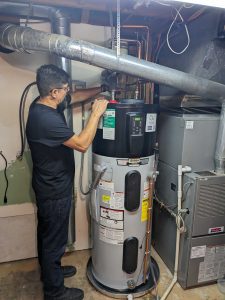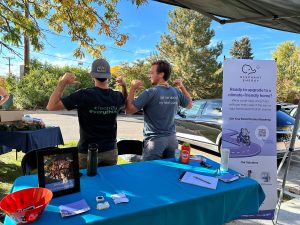New Year, New Heat Pump: Don’t Wait to Take Climate Action in 2024
Congratulations on surviving the holidays with your in-laws and diving head first into your New Year’s resolutions! Is upgrading to a climate-friendly home on that list? Here’s a friendly yet firm nudge: 2024 is not just another year, it’s a crucial time to consider upgrading to a heat pump or heat pump water heater.
Why the rush? Well, it’s not only about enjoying a cozier home and smarter savings on your bills. We’re racing against time for the planet. The clock is ticking towards 2030, a year earmarked by experts as critical for reducing global carbon emissions. Every heat pump installed is a step towards that goal. Sticking with that old furnace or unreliable water heater? That’s not just a hassle waiting to happen; it’s a missed opportunity to join the fight against climate change.
So, why not kick off the year by making your home more efficient and comfortable? What’s the best time of year to buy a heat pump? Don’t wait – the time is now!
1. Accelerating the Tipping Point: Every Installation Counts
What is the future of heat pumps? Well, we are approaching a critical tipping point in heat pump adoption. Every installation is a significant contribution, providing essential social proof that accelerates the transition to green energy. By installing a heat pump now, you’re not only taking a personal stand against climate change but also inspiring confidence in others to join this growing movement. Your action today is a powerful catalyst in this critical journey.
2. The Slow Rebate Rollout: A Call to Act Now
While the Inflation Reduction Act offers the promise of direct-pay rebates, its slow implementation—with only a few states expected to roll out rebates this year—suggests that waiting may not be the best strategy. If you’re in a position to install a heat pump without relying on these incentives, it’s prudent to proceed. Waiting could mean missing out on immediate benefits and potentially facing uncertainties regarding rebate qualifications.
3. A Singular Opportunity for Long-Term Impact
Choosing your next HVAC system is a once in every two decades decision. Opting for a heat pump now avoids the risk of being forced to select a less sustainable option in an emergency. A proactive choice today ensures that you are not contributing to another two decades of emissions. At what age should a heat pump be replaced? When well-kept, you can expect 15+ years out of your heat pump.
4. Stay Ahead of the Demand Curve
Demand for heat pumps is expected to surge, especially once rebates do become more widely available. As we’ve seen happen before, this increase in demand will likely lead to higher prices and longer installation wait times. By acting now, you avoid these pitfalls, start saving on energy costs immediately, and contribute to stabilizing market demand.
5. Influence Your Community: Share Your Climate Journey
Installing a heat pump gives you a unique opportunity to influence your community. Rather than boasting, use this chance to share your experience upgrading to a climate-friendly home. Your story can (and will!) inspire others to make similar choices, creating a ripple effect of positive environmental impact. Send us an email at hello@elephantenergy.com – we’d love to share your story.
Conclusion: The Time to Act is Now
In 2024, the message is clear: waiting comes with a cost, too. Installing a heat pump is a critical step towards a sustainable future. It’s a decision that benefits you, your community, and the planet. If you’re able to install a heat pump this year, don’t wait for a ‘better time’ or more incentives – the time to act is now.
Ready to get started? Join us in building a brighter future by electrifying everything, starting with homes. Your choice today shapes our collective tomorrow!

 To understand why “making it last” is so critical for efficiency, we first need to do a teeny science lesson on something called
To understand why “making it last” is so critical for efficiency, we first need to do a teeny science lesson on something called  pinpoint precisely where there are inefficiencies (i.e., cracks, crevices, and leaks where air is escaping) throughout your home. This includes inspecting heating and cooling systems, insulation, window integrity, sealing, and more.
pinpoint precisely where there are inefficiencies (i.e., cracks, crevices, and leaks where air is escaping) throughout your home. This includes inspecting heating and cooling systems, insulation, window integrity, sealing, and more.